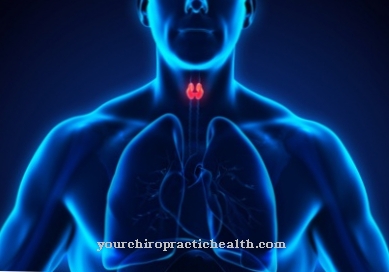Many of us are helpless and at a loss when we have to provide first aid to an injured or sick person. But nobody is allowed to evade the service of one's neighbor, because helping is a duty. Failure to do so will result in a fine or imprisonment. However, the penal code only expects everyone to provide reasonable help. The least that everyone has to do is secure the scene of the accident, rescue the suddenly sick person from the danger zone and call the emergency services immediately. Until he arrives, the victim must be protected from further damage. This includes vital emergency measures like that stable side positionsaving the life of the helpless patient.
What is the stable side position?

Infogram for stable lateral position as part of first aid. Click to enlarge. Download here to print.
If a person is unconscious, first aid requires first checking their breathing and pulse on the wrist or with four fingers on the carotid artery.
If his heart beats, he breathes spontaneously, he has to go into it stable side position to be brought. Infants and young children up to the age of four are an exception. You are placed on your stomach without a pillow, your arms are spread out and your head is turned to one side.
The point of the stable side position is that the unconscious person does not choke on his vomit or blood. Before doing so, it is essential to check the victim's oral cavity and remove vomit, mucus or loose bits of teeth.
Function, effect & goals
The stable side position is done in six steps. First, step up to the side of the unconscious person and slide your own hand under his buttocks. Place the patient's arm facing you, stretched out close to the side of his body.
Second, bend the leg facing you and stand it up. In the third step, you grab the shoulder and the hip of the passed out and pull him over to you.
In the fourth step, pull the arm below you towards you and bend it as well. Step number five means tilting your head far back to keep your airway clear.
In the last step, place the injured person's hand palm down under his cheek so that his face rests on the back of his hand.
The causes of unconsciousness can be a harmless circulatory collapse, very low blood pressure or dehydration, but also head injuries with concussion, cerebral haemorrhage, brain contusion, electrical shock, poisoning, hypothermia, a fractured skull or a stroke.
The stable side position may only be used if the vital functions of breathing and pulse rate are maintained. Breathing and pulse must be constantly monitored until the emergency doctor arrives. If a shock develops, the stable side position must be combined with a head-down position. Traumatic brain injuries are an exception. You are brought into the stable side position and the head is placed slightly high.
If breathing stops suddenly or if the pulse can no longer be felt, the patient must immediately be transferred from the stable side position to the supine position, the airways must be cleared and resuscitation can begin.
Certain injuries require special measures. If the arms or the collarbone are injured, the unconscious person must be placed on the healthy side when he is brought into the stable lateral position. If a leg breaks, the injured leg is stretched and the unconscious person is turned onto the injured side. If the chest is damaged, the patient is also placed on the injured side. The head must be slightly elevated if the victim has a traumatic brain injury.
Risks & dangers
There are risks in all life saving measures. Exaggerated and nervous action can cause damage just as much as failure to provide assistance. Correct positioning, encouraging encouragement and rest can often prevent further life-threatening situations.
Emergency patients are sensitive even when they are unconscious. Anxiety and panic can create an additional shock. Those who exude calm and act purposefully always convey a reassuring feeling of security. The basic principle is to stay calm and then act.
Since the obligation to provide first aid is anchored in the law, we should all take a course regularly, refresh our knowledge and do the necessary steps like that stable side position, to practice.






.jpg)




















